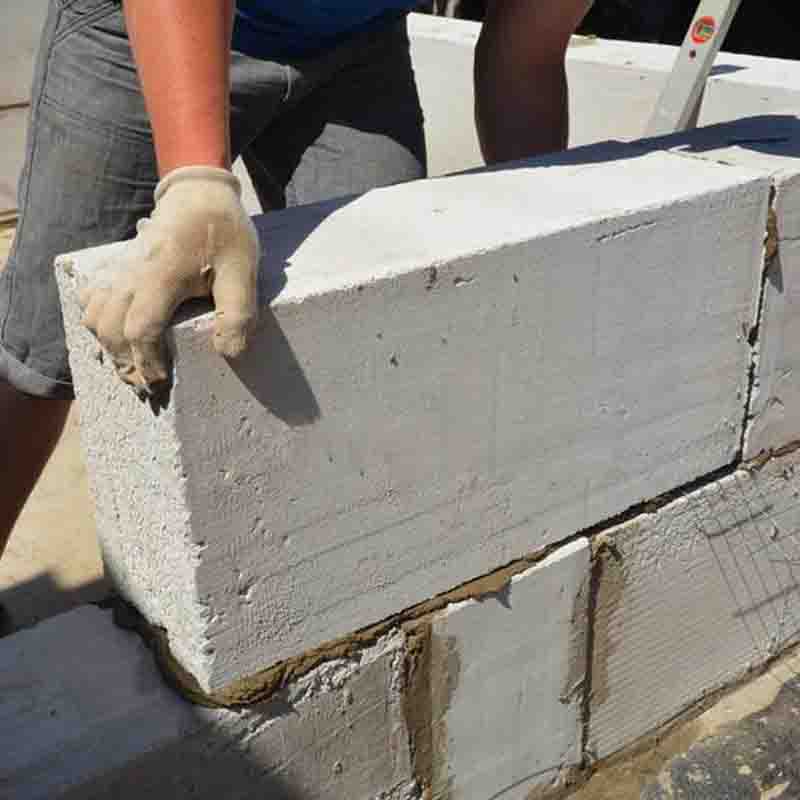The versatile jointing material known as AAC block adhesive is based on polymers and is specifically engineered to offer high bonding, durability, and construction speed for AAC blocks, fly ash bricks, concrete blocks, and other materials.
This highly versatile 3-5 mm thick mortar is pre-mixed and easy to apply. It is made of cement, graded sand, and admixtures. It replaces conventional jointing mortar, which has a thickness of 12-18 mm.
The advantages of AAC block adhesive, its functions, technical specifications, and the jointing process are covered in this article.
Procedure of Jointing
1. Surface Preparation
· It is necessary to thoroughly clean the application surface to remove any loose particles, dust, dirt, oil, and grease.
· It is necessary to cure the base before applying the adhesive.
· Before applying, any surface flaws like holes, cracks, or voids should be fixed.
2. Mixing of Adhesive
· Adhesive must be thoroughly and correctly mixed with water.
· The water to adhesive ratio is roughly 25–30% of the adhesive’s weight.
· It is advised to use potable water that is clean for mixing.
· After cleaning the adhesive mixing bucket, fill it with water and the necessary amount of adhesive.
· To ensure maximum workability and to save time and labor, it is recommended to use a mechanical stirrer for uniform and thorough mixing.
· The mix’s thickness and consistency are chosen based on its intended use.
3. Application of Adhesive
· Using a suitable trowel, apply a thin layer of mixed adhesive to the AAC blocks that ranges in thickness from 3 to 5 mm. This is the area where block work will be completed.
· Apply the same-thickness AAC Block Adhesive to both blocks’ sides after the first one is in place, making sure to constantly check the line and level.
· The process is repeated for the whole blockwork, and any excess adhesive that comes out of the block is cleaned right away.
Features of AAC Block Adhesive
· strong adhesive combined with a thin layer of jointing.
· Because the adhesive is pre-mixed, mixing and jointing are made simple.
· Since the thickness is only 3 to 5 mm, adhesive costs are significantly lower than those of cement mortar. Consequently, economical.
· Neither the adhesive nor the AAC blocks need to be cured.
· It takes less time to reach high tensile strength.
· The adhesive’s extremely thin thickness prevents shrinkage cracks in joints.
· The adhesive is low VOC and appropriate for green buildings because it is polymer-based.
Advantages of AAC Block Adhesive
· Thin Joints and Less Material
AAC blocks can be joined with an adhesive that is only 3–4 mm thick, as opposed to cement sand mortar, which requires mortar joints that are 8–12 mm thick. As a result, up to 75% less jointing material is needed.
· Speedy Construction
AAC block adhesive is a ready-mix substance that requires only the addition of water to be applied. On the other hand, making cement sand mortar requires precise proportioning of the raw materials and careful mixing to produce a paste, which takes time.
· No Curing
The adhesive doesn’t need any more water to reach the necessary strength; the water added during mixing is sufficient. As a result, the curing procedure is totally removed.
· Site Cleanliness
As the process of mixing, transporting and application is very well defined and hassle-free, the site environment can be easily kept clean.
· Minimum Process Time
As no curing is required, the masonry wall is ready for further works such as plastering in just 24 hours. While in the case of cement sand mortar, curing is done for 7 days.
· Less Wastage
Cement mortar accounts for 20-30% of wastage during its use. While there is negligible or no waste of AAC block adhesive.
· Thermal Insulation
The AAC block adhesive is specially formulated to match the thermal insulation property of AAC blocks. Hence, the whole masonry acts as a thermal barrier which is not the case of cement mortar.

